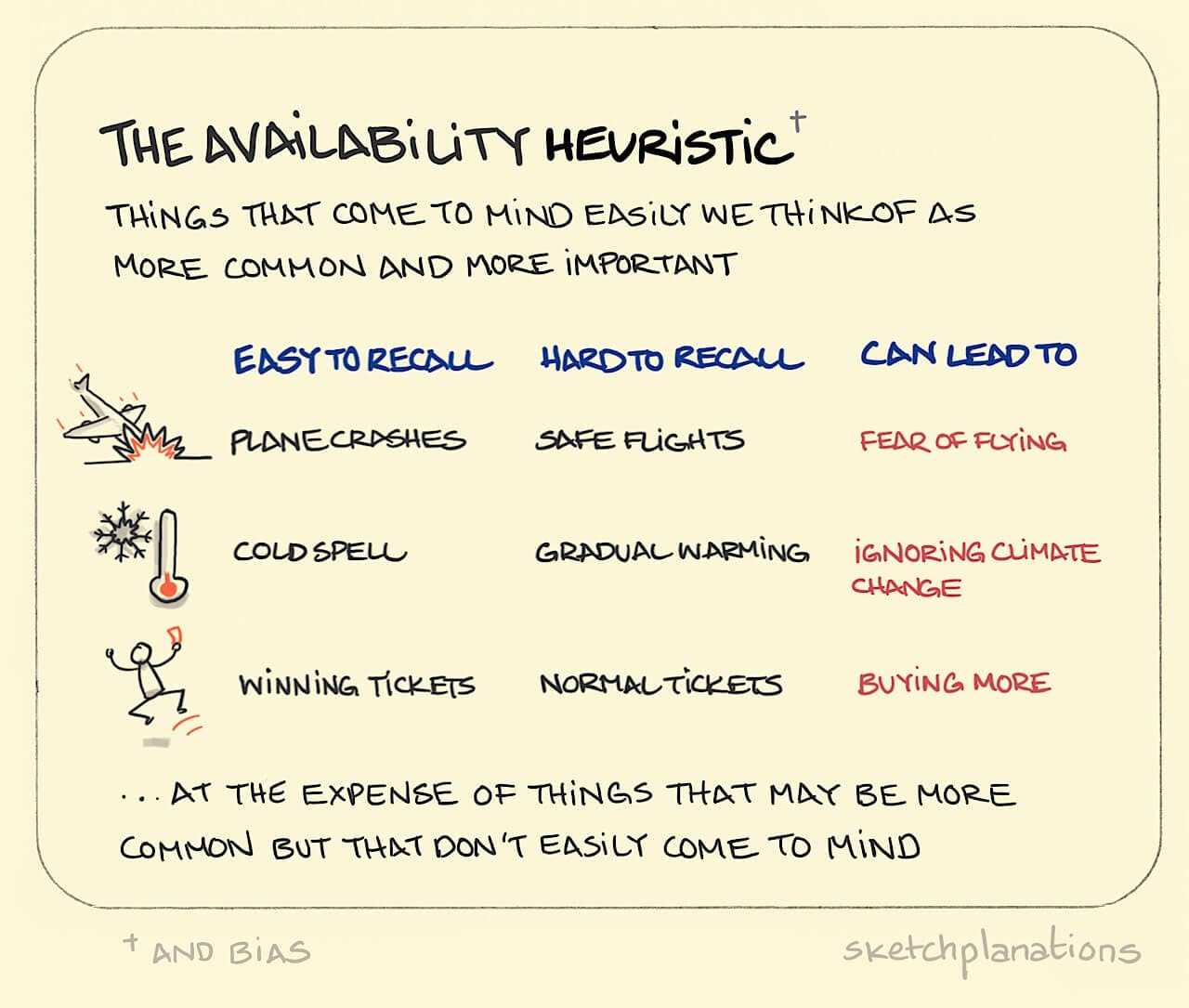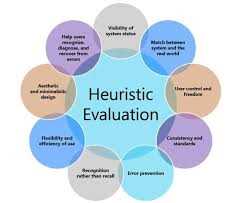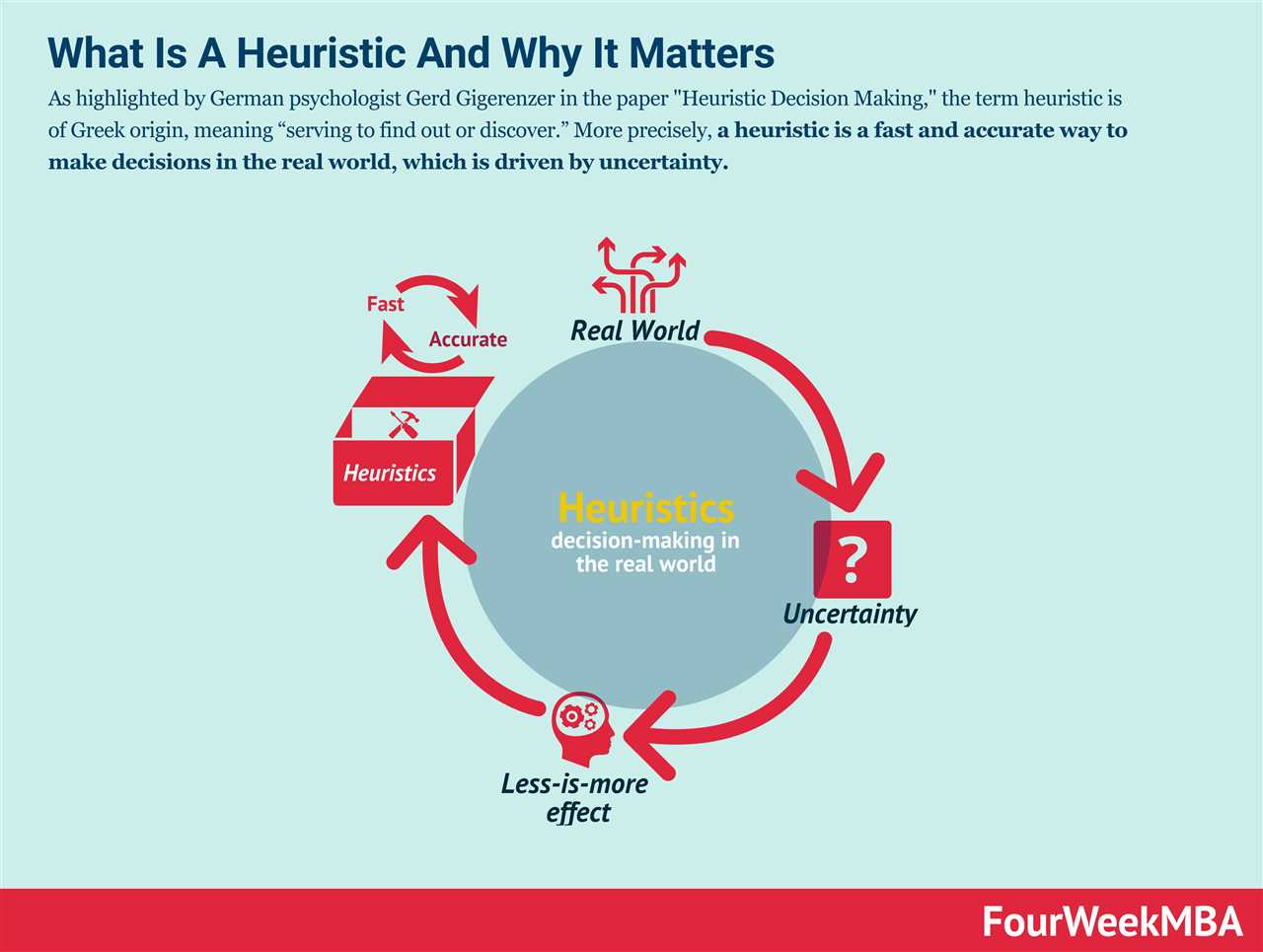Benefits of Using Heuristics
1. Time-saving

One of the main advantages of using heuristics is that they can save a significant amount of time. Instead of analyzing every possible option or solution, heuristics allow individuals to quickly narrow down their choices and focus on the most promising ones. This can be particularly useful in time-sensitive situations or when dealing with large amounts of data.
2. Simplification
Heuristics provide a simplified approach to problem-solving by breaking down complex problems into more manageable parts. By using heuristics, individuals can avoid getting overwhelmed by the complexity of a problem and instead focus on solving smaller, more specific aspects. This simplification can make problem-solving more accessible and increase the chances of finding effective solutions.
3. Decision-making support
Heuristics can serve as a valuable tool for decision-making. They provide a structured framework that individuals can use to evaluate different options and make informed choices. By following a set of heuristics, individuals can reduce the likelihood of making impulsive or irrational decisions and increase the chances of making sound judgments based on logical reasoning.
4. Creativity enhancement
Contrary to popular belief, heuristics can actually enhance creativity. By providing a set of guidelines and strategies, heuristics can help individuals think outside the box and explore alternative solutions. The structured nature of heuristics allows individuals to approach problems from different angles and consider unconventional ideas, leading to innovative and creative problem-solving.
5. Confidence boost
Using heuristics can boost individuals’ confidence in their problem-solving abilities. By having a clear framework to follow, individuals can feel more assured in their decision-making process and trust their judgment. This confidence can lead to more assertive and effective problem-solving, as individuals are more likely to take risks and explore different possibilities without fear of failure.
Common Heuristics in Problem Solving

1. Availability Heuristic
The availability heuristic is a mental shortcut that relies on immediate examples that come to mind when evaluating a specific topic or making a decision. For example, if we are asked to estimate the likelihood of a certain event occurring, we are more likely to rely on examples that readily come to mind, rather than considering a broader range of information. This can lead to biases, as vivid or recent examples may be more salient in our minds, even if they are not representative of the overall probability.
2. Representativeness Heuristic
The representativeness heuristic is a mental shortcut that involves making judgments or decisions based on how closely an individual or event matches a specific prototype or stereotype. For example, if we see someone wearing glasses and reading a book, we may assume they are highly intelligent, based on the stereotype that people who wear glasses and read often are intelligent. However, this stereotype may not always be accurate, and relying solely on representativeness can lead to errors in judgment.
3. Anchoring and Adjustment Heuristic
4. Confirmation Bias

Confirmation bias is a cognitive bias that involves seeking out information that confirms our existing beliefs or hypotheses while ignoring or downplaying information that contradicts them. This bias can lead to a narrow-minded approach to problem-solving, as we may only consider evidence that supports our preconceived notions. To overcome confirmation bias, it is important to actively seek out and consider alternative viewpoints and evidence.
5. Framing Effect

The framing effect is a cognitive bias that occurs when our decisions are influenced by how information is presented or framed. For example, if a product is described as “90% fat-free,” we are more likely to perceive it as healthy compared to if it is described as “10% fat.” This bias highlights the importance of how information is communicated and the potential for manipulation in decision-making.
Applying Heuristics in Investing
One common heuristic used in investing is the “availability heuristic.” This heuristic involves making decisions based on readily available information or examples that come to mind easily. For example, if an investor hears about a successful tech company, they may be more likely to invest in similar tech companies without conducting thorough research.
Another useful heuristic is the “representativeness heuristic.” This heuristic involves making decisions based on how closely an investment opportunity resembles a known pattern or stereotype. For example, if an investor believes that a certain industry is booming, they may invest in companies within that industry without considering individual company fundamentals.
The “anchoring and adjustment heuristic” is another commonly used heuristic in investing. This heuristic involves making decisions based on an initial reference point or “anchor” and adjusting from there. For example, if an investor sees a stock price significantly lower than its historical average, they may perceive it as undervalued and decide to buy.
To effectively apply heuristics in investing, it is important for investors to be aware of their biases and limitations. They should also complement heuristics with thorough research and analysis to ensure informed decision-making. By combining heuristics with a rational and disciplined approach, investors can make more informed investment decisions in a complex market.
| Benefits of Applying Heuristics in Investing |
|---|
| 1. Simplifies decision-making process |
| 2. Allows for quick assessment of investment opportunities |
| 3. Provides mental shortcuts for complex market analysis |
| 4. Can be used as a complement to thorough research and analysis |

Emily Bibb simplifies finance through bestselling books and articles, bridging complex concepts for everyday understanding. Engaging audiences via social media, she shares insights for financial success. Active in seminars and philanthropy, Bibb aims to create a more financially informed society, driven by her passion for empowering others.
